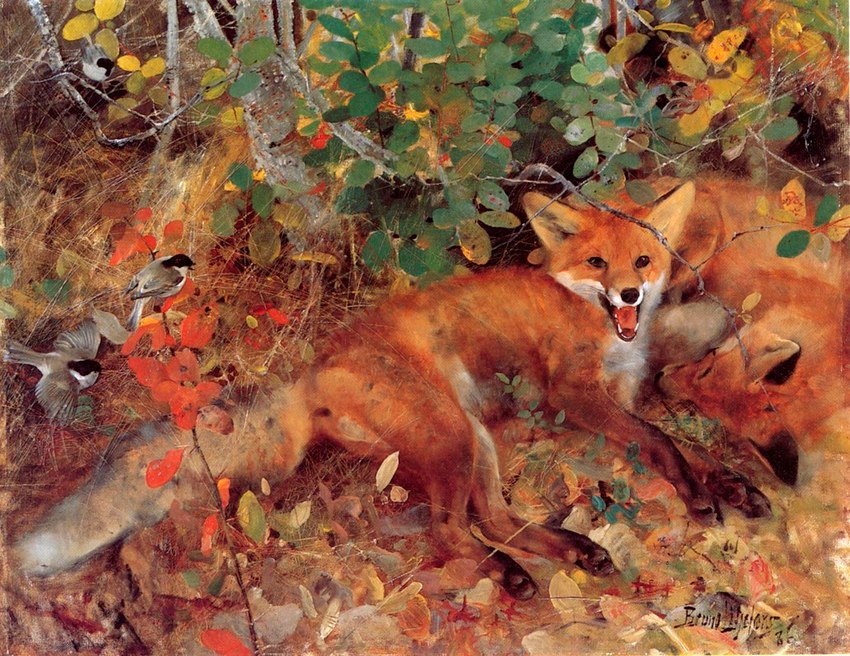Description
In Kvarnbo outside Uppsala, Liljefors built his studio and his home. There he also came to gather living animals around him, both those who had to be kept in cages and those who were allowed to move freely. With the help of these models, he was able to supplement the observations he made out in the woods and on the ground. Liljefors was fascinated by the fox in its capacity as an intelligent and agile predator. The two portrayed young foxes may have belonged to the artist's menagerie in Kvarnbo. However, the painting gives the impression that they were surprised out in nature - they seem unaware that they are being observed by others. For the realism painters of the 1880s, it was important that a painting did not seem arranged. The autumnal color scheme of the painting is sonorous and joyful. The painting itself seems to have been a fun-filled job. In the background, the fast, virtuoso brushwork sometimes resembles fencing. The leaves of the bushes are painted with wide brushes, the sprawling twigs with narrower ones, and the blades of grass are often carved in color. The background, not least in the upper left corner, can almost be enjoyed as a non-figurative, spontaneous painting when viewed up close. When the image is seen from a distance, it regains its illusionist effect. The two young foxes, born in the spring, are still playful and they still have their typical soft fur, which contrasts with the dynamic brushwork in the vegetation. As in most of Liljefors' paintings, the animals have been depicted in a relatively detailed way. This applies not least to the head of the fox who directs his gaze out of the picture.

There are no comments.
Login to respond »